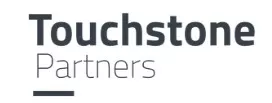- with readers working within the Law Firm industries
- within International Law and Energy and Natural Resources topic(s)
Introduction
The Indian alternative investment funds (AIFs) regime, which is just over a decade old, can be said to have been fairly successful, with significant commitments being made to AIFs since the introduction of the regime. That's not all – this vehicle of choice is also projected to continue growing at a steady pace as the Indian economy continues on its growth trajectory. It is therefore not surprising that the last couple of months have seen the Securities and Exchange Board of India (SEBI, which regulates AIFs) increasingly focus on amending and augmenting the SEBI (Alternative Investment Funds) Regulations, 2012 (theAIF Regulations), gearing them for, among other things, an increased level of transparency.
The most recent reform is the SEBI circular dated 10 April 2023 (theSEBI Circular), which prescribes guidelines in relation to excuse rights of investors. Briefly, an excuse or exclude right is like a pre-agreed opt-out right which allows the investment manager (theIM) to excuse or exclude an investor from its obligation to make contributions to the fund (particularly in respect of making specific portfolio investments and bearing the underlying expenses) in certain scenarios.
This note analyses the SEBI Circular and discusses some of the key issues it raises.
The need for excuse and exclusion rights
With business entities prioritizing their environmental, social and governance (ESG) goals, excuse rights have gained traction over the last few years and are becoming increasingly important from an investor perspective. The typical triggers for an excuse right other than compliance with their respective internal ESG policies include where a proposed investment is in contravention of an investor's internal policies (in some cases this could even include religious considerations and the requirement to stay away from making "non-kosher" investments in certain identified industries such as alcohol and tobacco) or applicable laws. From the perspective of non-excused investors, it is also important to ensure that relevant protective provisions are incorporated to address an excuse scenario, of which the key provision is the excused investors not being able to partake in any upside for such investments and / or exercise any voting rights in relation to such investments.
As a corollary to the excuse right, an IM may want to exclude an investor from certain investments that are being made by the fund in cases where participation from such investor results in violation of applicable law which could lead to a material adverse effect on the fund or on any other investor.
The triggers for excuse and / or exclusion provisions are generally agreed upon upfront between the IM and the relevant investors in the contribution or more typically by way of a more discreet side letter arrangement.
The SEBI Circular
Picking up on cues from the general trend, SEBI had previously in circa February 2020 prescribed a draft template for a private placement memorandum (PPM,i.e., the information document highlighting the key facets of the investment fund / scheme) to be prepared by AIFs, to ensure that certain minimum level of information is provided in the PPM in a uniform and standardized format. The template contemplated certain disclosures in relation to excuse and exclusion rights including information on the categories of unitholders that may be excluded and the consequences of such exclusion. However, the disclosures that were made were not to SEBI's satisfaction with the SEBI Circular specifically noting that there has been "inconsistency and lack of adequate disclosure" in this regard. In fact, a majority of the AIFs with sophisticated institutional investors would get their investors' consent to altogether dispense with the requirement of following the SEBI prescribed format (this was permitted in certain specific cases), which lead to further inconsistencies in disclosure.
It is in this backdrop that the SEBI Circular has been issued. The SEBI Circular lays down the specific situations in which an AIF may excuse its investors from participating in a particular investment opportunity, which are: (i) the investor confirming that its participation in the investment opportunity would be in violation of applicable law or regulation – with such confirmation being based on a legal opinion;or(ii) the investor having disclosed to the IM as part of the definitive agreements that its participation in a particular investment opportunity would be in contravention of its internal policy which should have been communicated to the IM in advance.
The SEBI Circular further provides that the AIF may exclude an investor's participation if the IM is satisfied that the participation of such investor in the investment opportunity would lead to the scheme of the AIF being in violation of applicable law or regulation or would result in a material adverse effect on the scheme of the AIF. The rationale for the exclusion, however, will need to be documented by the IM.
Helpfully, SEBI has also clarified that partial excuse / exclusion rights would also be extended in cases where the ultimate investors under a dual layered structure or a fund of funds are required to be excused / excluded (to the extent of the indirect contributions in the AIF).
These guidelines are expected to help streamline the discussions on excuse rights between the investors and the IM – preventing investors from negotiating excessive excuse rights which do not strictly meet the "test" prescribed by SEBI under the SEBI Circular (which could otherwise potentially drive a coach and horses through the "blind-pool" argument which SEBI remains intent on maintaining).
Questions, concerns et al.
Whilst a step in the right direction, the SEBI Circular does indeed raise certain fundamental questions.
Excuse vs. exclusion
It is pertinent to note that whilst investors need to support a request for exclusion on grounds of violation of applicable law or regulation by way of a legal opinion (which could lead to additional costs from the investor's perspective unless such opinion is obtained from an in-house legal advisory team), in terms of the IM's right to exclude investors, there is no such requirement and the IM is simply required to "record" the rationale and supporting documents. In fact, the IMs can exclude an investor in case of a, broad-brush, "material adverse effect" scenario as well.
Accordingly, investors will have to be mindful of the discretion that has been given to IMs in this respect while negotiating the documentation, especially determining upfront what a "material adverse effect" to the AIF / scheme would entail and potentially also a quid pro quo requirement for the IM to support its position by way of a legal opinion.
Disclosure to other investors
Unlike some of the other jurisdictions with a more developed funds regime, the SEBI Circular still falls short of contemplating a formal disclosure of the excuse rights proposed to be exercised by one investor to the other investors. Having said that, in practice, we think IMs will disclose these rights to other investors, especially because the other investor will ordinarily be expected to pick up the tab to the extent the investment opportunity goes unfunded.
On a related note, investors and IMs would also need to discuss and agree on the way future portfolio investments are funded, i.e., whether the drawdowns for a future investment post an excuse / exclusion would be based on undrawn commitments or total commitment made – as with excuse / exclusion rights added to the mix, the calculations from the two approaches could be different. For instance, in case future drawdowns continue to be based on initial commitments, the fund could ultimately end up investing less than the desired corpus (as the commitment of the non-excused investors would get exhausted earlier) whereas in case of calculations made on the basis of undrawn commitments, the investors would end up with different levels of exposure to subsequent deals than the respective stakes they would have contemplated. In a similar vein, the investors should also determine upfront how the inter-se voting thresholds should work. Currently, the SEBI Circular does not provide any guidance on these points as such, implying that these matters will need to be determined based on the commercial understanding between the contracting parties, which is seemingly the correct approach.
Interplay with diversification norms
Another grey area which remains is the impact of the excuse / exclusion on the diversification requirements under the AIF Regulations which provide that SEBI registered AIFs cannot invest more than 25 per cent. of the "investable funds" in one portfolio vehicle. The answer to whether the 25 per cent. limit should be calculated excluding the entire undrawn commitment of such excused / excluded investors from the base remains unclear and perhaps a conservative approach would be to excuse / exclude such portions – which would have a direct impact on how much is it that the fund can actually invest in the portfolio investment at hand.
The GIFT City angle
With the Gujarat International Finance Tec-City (theGIFT City) catching on as a favourable jurisdiction to house AIFs, there is an increased preference for dual layered structures wherein GIFT based AIFs are used to pool monies from investors and these in turn invest into SEBI registered AIFs. The SEBI Circular, whilst recognising partial excusals in case of such structures, does not really clarify for instance on whom the obligation to provide the legal opinion is applicable i.e., would the ultimate investor need to issue an opinion to the domestic fund as well or will the opinion from the investor to the GIFT fund suffice? Similarly, if the excuse right is to be exercised due to internal policy requirements, could it mean that in the GIFT layer documentation the internal policies of the ultimate investor would need to be referred to and the IM of the onshore AIF would also need to be provided updates re such changes? Whilst we will need to see if the regulatory authority in GIFT, i.e., the International Financial Services Centres Authority, comes out with any similar regulatory guidance and also how the practice in this area develops – in the meanwhile, the IMs of these funds may seek to impose similar obligations on investors where a GIFT AIF is in turn looking to invest in an onshore SEBI registered AIF so that the GIFT AIF can fulfil its obligations under the SEBI Circular by way of back to back paperwork.
Further, given that AIFs in GIFT City may also avail of subscription line financing facilities for making portfolio investments (as opposed to SEBI registered AIFs which only have very limited scope to do so), both the investors and the IMs should negotiate excuse / exclusion rights keeping in mind the practical challenges that we see funds outside India facing in this regard. Typically, in case of a loan availed of by a fund, the lender's main security is over the IM's ability to draw down funds from the investors. Therefore, where a fund contemplates raising a lending facility, the IM has to play a balancing act: between conceding to reasonable excuse requests from investors and considering the potential impact of such provisions on a lender's decision to lend.
Globally, lenders typically do not include the capital commitments of the excused or excluded investors in the relevant borrowing base, however this becomes difficult where the basis of exercise of excuse rights is a moving goal post (and can be affected by say a change in applicable law or more particularly a change in internal policies).
Concluding thoughts
Whilst clarity under the SEBI Circular is welcome in terms of legitimising the excuse / exclusion regime and there is still of course room for investors to negotiate specific positions in this regard, as an overarching point, an attempt to govern such specific set of rights can be seen to be setting an unfavourable precedent – AIFs owe their popularity in part to the fact that the applicable regulatory regime is relatively "light touch". The general expectation of sophisticated private fund investors while investing in AIFs is that of a fair degree of commercial freedom with the ultimate outcome on how each of the parties fair coming down to how much bargaining power they hold (and the coins in their respective purses!). Fortunately though, the regulation around excuse and exclusive rights is not as prescriptive so as to impede the desire of sophisticated investors to have flexibility in their dealings with the IMs.
The content of this article is intended to provide a general guide to the subject matter. Specialist advice should be sought about your specific circumstances.






